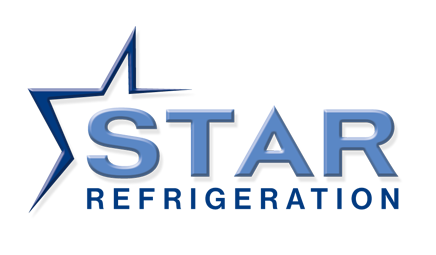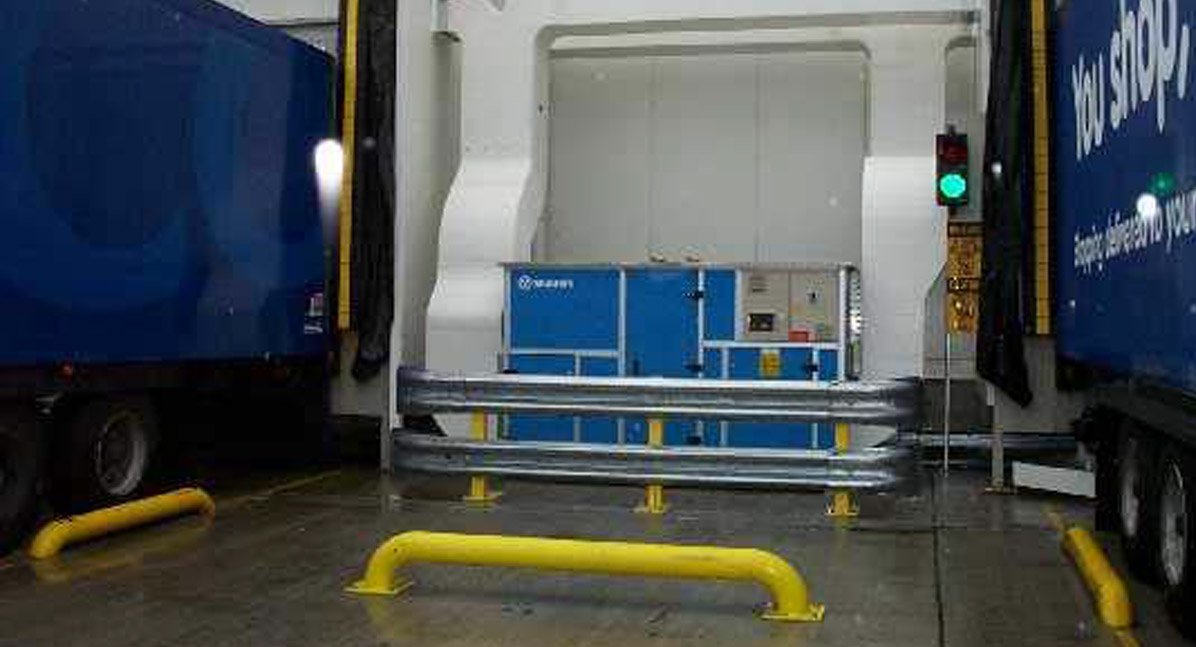Star’s use of dehumidification in cold stores.
Cold store operators are increasingly looking to minimise operating costs by conveying goods within the distribution chain as quickly and efficiently as possible. Cost effective cooling solutions that maximise plant efficiency and optimise performance are key requirements for the cold storage industry today. Refrigeration plant is a major consumer of electricity for cold store operators and can account for as much as 75% of the site’s usage.
In an attempt to reduce refrigeration plant running costs, some cold store companies have raised chamber temperatures. A cold store temperature increase of just 1°C can improve refrigeration plant efficiency by 3%. However, it is vital that energy efficiency is achieved without the risk of affecting product quality.
A recent design development to improve cold store refrigeration plant efficiency has centred on the use of dehumidification systems. Many new cold stores are built without chilled loading bays and with loading dock pods directly into the frozen chamber. No trailer door seal is 100% effective at preventing air ingress into the loading dock pod during loading and unloading. This means that moist external air is drawn into the cold store each time a loading dock pod is in operation. A difference in air density and pressure between the ambient and frozen chamber is the driving force for this air ingress. Water vapour within the air is drawn up to the evaporators and forms ice on the coils. Over time, this reduces plant efficiency, and the evaporator must undergo a defrost to remove the ice. Each time a cooler defrosts, heat is dissipated into the store, which must then be removed by the refrigeration plant. Reducing the moisture ingress reduces the number of defrosts, which in turn reduces the cooling load of the refrigeration plant. The net result is an increase in efficiency and a reduction in energy usage.
As warm external air entering the cold store comes into contact with walls, floors, ceilings and other surfaces, it forms ice. Slippery floors and falling ice pose a potential safety hazard for operators within the store. It can also cause fog and wet floors within the loading dock pods. Removing moisture from the warm ambient air before it enters the cold store is key to preventing ice and frost formation on evaporators, walls, floors and ceilings.
Dehumidification offers a simple solution to reducing moisture ingress, by capturing moist air from the loading dock pods before it enters the cold store. In simple terms, a dehumidification system comprises a dehumidification unit connected to one or more loading docks by flow and return ductwork. Warm, moist air is extracted from the dock pod close to the outer ambient door and is drawn down ductwork to the dehumidification unit. The air is then drawn across a desiccant wheel within the dehumidification unit. Moisture is absorbed by the wheel and ejected into the atmosphere outside the cold store. Dry air is then returned to the loading dock at a point adjacent to the inner cold store door. Dehumidification systems can be designed for a single air lock or multi loading dock pod facility. Star has installed a single dehumidification unit to serve 24 loading docks, reducing installation costs whilst still providing effective moisture removal.
Results from dehumidification systems installed by Star Refrigeration over the past five years have indicated a significant reduction in moisture ingress and improvement in plant operating efficiency. By investing in dehumidification systems, one operator with 36 loading docks reduced moisture ingress into their cold store by 6 tonnes of water per day. Star has also been involved in projects where previously three plant defrosts per day were required due to high levels of moisture ingress. Following the installation of a dehumidification system, this requirement was reduced to one plant defrost per day.
As well as increasing plant efficiency and saving energy, dehumidification systems play a key role in improving health and safety within cold stores. By controlling moisture within the cold store environment, operators can eliminate safety hazards associated with ice and reduce accident levels. This means that the cold store can operate continuously without the need to stop operations because of slippery floors or for the removal of ice.
Star has worked in association with moisture control experts Munters to develop state-of-the-art dehumidification systems for the cold storage industry. These systems have been used successfully in many cold store and freezer installations throughout the UK.
Star has designed and installed dehumidification systems for major blue chip cold store distribution operators, as well as clients in the food manufacturing sector.
Despite offering significant benefits, dehumidification systems are often overlooked by cold store operators. The energy requirement for operating a dehumidification unit is minimal when compared to the energy wastage in a cold store where a system is not installed. Investment costs are far outweighed by the energy savings achieved within a relatively short time scale and by the store remaining operational 24/7/365.”
Star Refrigeration is the UK’s largest independent industrial refrigeration engineering company. Star focuses on the design, manufacture, installation, commissioning and maintenance of industrial refrigeration systems. The company offers a turnkey package to all users of refrigeration plant.
Star’s technical advisory arm, Star Technical Solutions (STS), operates as an independent consultancy providing advice on refrigeration engineering issues. Star also owns food freezing and chilling equipment specialist Starfrost, as well as mechanical and electrical contractors Penec.


